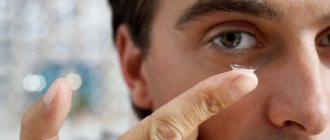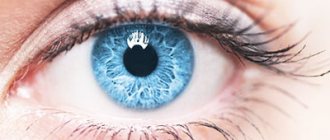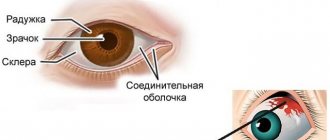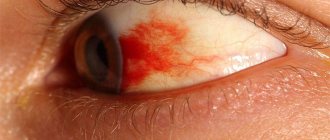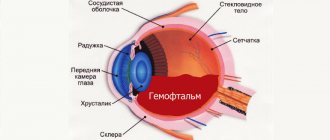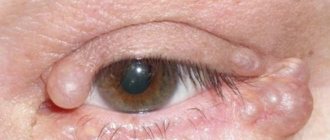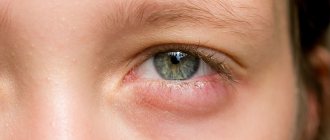Swelling under the eyes, the causes of which may be hidden in serious pathology, is not always correctly interpreted by patients. It is in vain to believe that slight swelling around the eyes cannot indicate gross violations of the internal organs. On the contrary, swelling under the eyes is an indicator of the condition of many organs. The causes of swelling under the eyes may be associated with functional disorders of internal organs or severe organic problems, but there may also be a simple error in diet. More information about swelling around the eyes:
Edema of the eyelid - what is it? What reasons could there be?
In this article
- Edema of the eyelid - what is it? What reasons could there be?
- For what other reasons can the lower eyelid swell?
- The eyelid under the eye is swollen. What are the symptoms?
- What to do if the lower eyelid is swollen and painful?
- How is the diagnosis done if the lower eyelid is swollen and painful?
- What are the treatment methods for swelling of the lower eyelid?
- About home therapy for swelling of the lower eyelid
- Is it necessary to resort to surgery if the lower eyelid is swollen?
- Preventive measures for swelling of the lower eyelid
Eyelid edema is what ophthalmologists call localized excess fluid accumulation in the eyelids. This disease is quite common and can occur both under the influence of external factors and due to internal inflammatory processes. Swelling of the lower eyelid acts as an independent symptom, but the eyelid can also swell as a result of an existing disease. That is, the process is a sign of some disease. For what reasons can you understand why the lower eyelid is swollen and what to do about it? In fact, there can be a lot of factors - fatigue, non-compliance with the rules of visual hygiene, low-quality cosmetics, and a number of cosmetic procedures. Eyes also become swollen due to excessive consumption of salty or spicy foods and alcohol before bed. An insect bite or mechanical injury are also causes of swelling of the lower eyelid. If the lower eyelid is not only swollen, but also painful and itchy, then you may be dealing with an ophthalmological disease. We can also talk about disturbances in the functioning of other organs. So, ophthalmologists say that the following pathologies may be among the causes:
- kidney dysfunction, leading to swelling of the eyes, legs, arms, face;
- problems in the functioning of the heart and blood vessels;
- hormonal imbalance and many others.
It is not recommended to determine the reasons why the lower eyelid (as well as the upper) is swollen without consulting a specialist, since untimely and illiterate medical care can affect your health in the future.
Floaters before eyes
Floaters before the eyes, that is, floaters, are a common symptom in patients who seek help from an ophthalmologist. Ophthalmologists usually call such changes in the visual apparatus “destruction of the vitreous glass.”
Damage to the inner side of the visual organ is the source of floaters (vitreous humor, which is presented in the form of a jelly-like substance that fills the eye). In the light penetrating the eyeball, floating opacities appear on the membrane of the eye organ in the form of black flies. They mainly occur in nearsighted people and the elderly. On a uniform background of light shades, the flies are clearly visible, but are practically absent on a dark, heterogeneous surface.
Initially, a person suffers greatly due to the appearance of black flies. After some time after the opacities occur, the patient gets used to it and stops noticing them. This symptom does not need treatment. It is impossible to get rid of it forever. Over time, the floaters may decrease (partially dissipate).
For what other reasons can the lower eyelid swell?
In addition to the above reasons, there are several common factors that can cause eyelid swelling. Often ophthalmologists mention chalazion or growth of subcutaneous tissue. Let's talk about each disease in more detail.
The first appears at the moment when the gland ducts secreted by the glandular tissue become clogged. As a result of the accumulation of substances in the ducts, the eyelid may become swollen and red. In addition to swelling and redness, a compaction may occur, which causes pain when pressed. Sometimes this pathology can be chronic and appear from time to time. As for the growth of subcutaneous tissue, we should talk about hormonal disorders or excess weight, which entail an imbalance in metabolic processes. It is in these processes that fiber plays a key role - it is responsible for normalizing the temperature of the underlying tissues. In addition to swelling, with the growth of subcutaneous tissue, the lower eyelid may itch and hurt, and bags sometimes appear under the eyes.
Stinging in the eyes
This symptom is one of the most common. Acute discomfort in the visual apparatus can occur as a result of many factors. Basically, the symptom in question manifests itself due to damage to the eye tissues and nearby structures. Occasionally, pain in the eyes occurs due to diseases of the nervous system, which is responsible for the normal functioning of the nerve impulse that passes from the visual apparatus.
Often the source of pain in the eyes is inflammatory diseases in the visual apparatus. In the first place are conjunctivitis of various origins: bacterial, viral, allergic, as well as the so-called photoconjunctivitis. Next come cyclitis, keratitis and blepharitis.
As a rule, inflammatory processes in the organ of vision appear along with redness of the mucous membrane, tearing of the eye, and photophobia.
The main cause of eye pain is acute conjunctivitis from the action of pathogenic organisms. Weakened immunity, injury to the eye shell, lack of personal hygiene, improper use and disinfection of contact lenses, all these factors can become sources of the development of acute conjunctivitis. Causes of pain in the eyes:
- Inflammatory diseases. Such as: conjunctivitis, keratitis;
- Diseases affecting the eyelids. Usually accompanied by fear of light and lacrimation (blepharitis, uveitis);
- Viral diseases (herpes, flu, measles, etc.);
- Demodectic mange disease;
- Incorrectly selected or low-quality contact lenses for the eyes;
- Visual strain;
- Trinitarian neuralgia. The disease occurs with painful sensations in the eye, facial and oral cavities;
- Astigmatism (impaired refraction of the eye);
- Unnatural cosmetics that cause acute discomfort in the eyes;
- Glaucoma and cyclitis are also sources of pain in the eyes;
- Injury to the organ of vision of various types (for example, penetration of foreign particles);
- Various burns of the visual organ;
- Diseases of the thyroid gland can affect the appearance of pain in the eyes;
- Penetration of cigarette smoke into the eye area;
- Increased pressure inside the eyes resulting from neuralgic or ophthalmological diseases;
- Impaired functioning of the sebaceous glands of the body.
What to do if the lower eyelid is swollen and painful?
What to do if the lower eyelid in one eye hurts and is swollen? This question arises first of all when swelling occurs. And this is easy to explain, since, as mentioned above, there can be a lot of reasons.
If the day before you did not eat anything salty, did not abuse alcohol, and a couple of hours after waking up the swelling has not gone away, then you should make an appointment with an ophthalmologist. Only a competent specialist can understand the cause and prescribe the necessary treatment.
Double vision
Double vision is called diplopia. A symptom in which the movement of the eyeballs in one direction is disrupted, which compares pictures, as a result of which the object is recognized by the visual apparatus as two different images. Double vision is accompanied by dizziness, loss of spatial orientation, and false assessment of the distance of objects.
Double vision can be horizontal, vertical or diagonal.
This follows from the violation of which muscle occurred. In addition, if you cover one eye, diplopia disappears. It is rare for double vision to occur in only one eye. This is possible when the eye lens is damaged, causing the light that passes through it to disappear. Causes of diplopia include:
- Lesions of the central nervous system (for example, strokes, brain tumors of various types, multiple sclerosis, meningitis);
- Disorders of the periphery of the nervous system (neuritis, diabetic neuropathy, compression by existing tumors);
- Changes in visual muscles and their tone due to paresis, paralysis (occurs in myasthenia gravis, myositis, theriotoxicosis);
- Eye tumors (neoplastic growths that gradually displace the eyeball into an incorrect position);
- Injury to eye tissue and surrounding structures. In this case, the source of double vision is a displacement of the eyeball to the side due to swelling (bruising) or damage to the eye walls;
- Poisoning with harmful substances (botulism, intoxication with alcohol, nitrates, etc.). This symptom can also be encountered during intoxication;
- General diseases. Diplopia can also occur with influenza or ARVI due to intoxication of the human body.
What are the treatment methods for swelling of the lower eyelid?
Currently, several treatment options are offered depending on the individual characteristics of the patient and the clinical picture of the disease. It is important to understand that if the eyelid under the eye is swollen due to any disease, then first you should resolve the issue with the root cause, and then begin treating the swelling. In most cases, doctors prescribe treatment of the swollen lower eyelid of one eye with ointments (tetracycline or prednisolone) using a boric acid solution for disinfection. The course of treatment also includes the use of antibacterial drops, for example, Levomycetin or the drugs Claritin and Zodak.
The latter are necessary if the cause of swelling and redness of the eyelid is an allergic process. When swelling of the eyelid is caused by regular lack of sleep and overwork, it is recommended to select a good decongestant eyelid cream. Self-medication is not recommended, as swelling can negatively affect the visual function of the eye. Also, you should not resort to folk remedies if your doctor has not said anything about them.
Feeling of pressure on the eyes
The pressure that occurs from the contents of the eyeball on its protein membrane (sclera and cornea) is called ocular pressure. To feel eye pressure, you need to lightly press your finger on the eyelid. Most often, people suffering from various diseases (colds, headaches, glaucoma, inflammation, etc.) call this pressure a feeling of heaviness and “bloating” in the eyes.
The reasons may be:
- Glaucoma. This disease is also manifested by decreased vision and the appearance of redness in the visual organ;
- Allergic reactions. At the same time, itching and excessive tearing appear;
- Diseases of the nasopharynx caused by infections: sinusitis, sinusitis, meningitis. The diseases are accompanied by severe pain in the head, radiating to the temple;
- Fatigue of the visual organ. In most cases, this occurs due to spending a long time in front of computer and TV screens, which causes dryness and a pressing feeling in the eyes;
- Incorrectly chosen glasses or lenses for vision. In addition to pressure, pain appears in the organ of vision;
- Stress. With emotional fatigue, blurred vision occurs;
- High blood pressure. At the same time, there is a feeling of heavy eyelids.
About home therapy for swelling of the lower eyelid
As mentioned above, resorting to folk remedies and self-medication in the case of edema is not recommended. First you need to consult a specialist. However, if the doctor has allowed the use of alternative methods of medicine, then the most effective are rinsing with fresh warm tea or a solution of boric acid, after which it is recommended to lubricate the eyelid with hydrocortisone ointment. Cold compresses made from herbal decoctions (chamomile, mint) also perfectly relieve swelling.
If you are not allergic to honey, a lotion of fresh cucumber juice and honey will help. If the lower eyelid is swollen and painful, then choose a herbal decoction containing calendula, sage, mint, fennel and thyme. You can soak cotton pads in the warm broth and apply them to your eyes for a quarter of an hour.
Preventive measures for swelling of the lower eyelid
It doesn’t matter whether we are talking about swelling of the lower or upper eyelid, there are several really working techniques that will prevent the presence of this disease. Of course, we are not talking about cases where the cause of edema lies in other diseases, the solution of which should be addressed first. You need to lead a healthy lifestyle, avoid alcohol and excessive consumption of salty and spicy foods, monitor your water balance (drink at least two liters a day), and do eye exercises on a regular basis. Especially if you spend a lot of time at the computer or with gadgets. Before touching your eyes, you must wash your hands thoroughly, do not use other people's cosmetics, follow the rules of visual hygiene and regularly visit the ophthalmologist's office.
Kidney pathology
Violation of the excretory function of the kidneys leads to the accumulation of excess moisture in the body, which is distributed in the intercellular space, especially between connective tissue cells. The main reason why the face swells in the morning is renal failure. The reasons for its occurrence:
- chronic and acute pyelonephritis;
- chronic and acute glomerulonephritis;
- disturbances in the blood supply to the renal tissue (blockage of renal vessels with a thrombus or plaque, arterial hypotension, abnormalities in the development of the kidneys or renal vessels).

